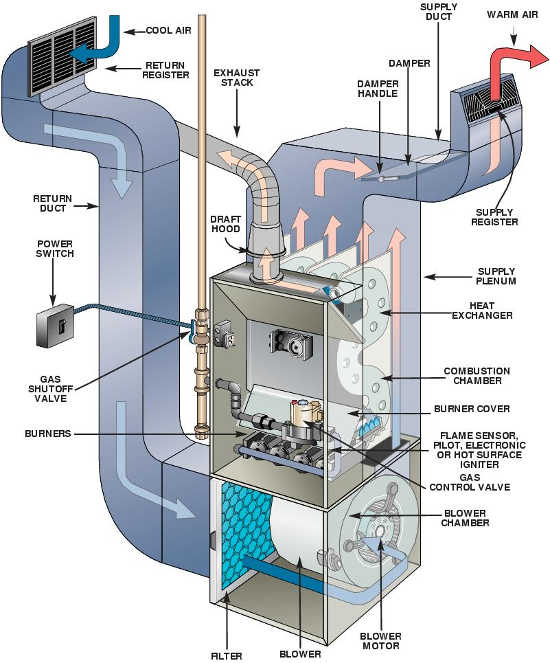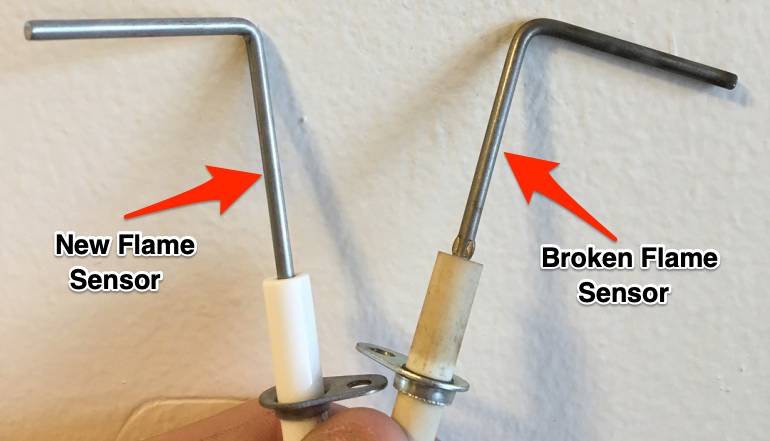Leonard Splaine Reasons why a furnace burner won’t stay lit

Nothing can be more frustrating on a cold winter day than to have your furnace start to heat your home, then suddenly shuts off due to the burner losing its flame and you are still freezing cold!
So why isn’t your furnace staying lit?
There are a few reasons why a furnace burner won’t stay lit, and while you shouldn’t endeavor to repair a malfunctioning furnace burner on your own, it is helpful to understand why it can happen.
To troubleshoot the problem, first and foremost, you need to understand how your furnace ignition system works. Then you can watch your furnace and pinpoint where the problem is happening.
How furnace ignition systems work

When you hear the furnace power on, do you know exactly what goes on to bring that heat to you? You likely know the basics: that heat is generated by an ignition system and that a fan then blows heated air into your home.
While there are different kinds of furnaces with slightly different ignition systems, here’s how an average furnace ignites:
- Your thermostat calls for heat.
- The draft inducer fan kicks on. This fan gets fresh air into your furnace to create a safe combustion chamber.
- The gas valve opens and sends gas to the pilot burner.
- The pilot light is lit by an electronic spark.
- A flame sensor lets your furnace know that the pilot was successfully lit.
- The gas valve sends gas to the main burner(s), which is lit by the pilot light.
If you have a direct ignition furnace, you won’t have a pilot light. These furnaces skip steps 3-5 and instead light the burner directly. Your furnace will still have a flame sensor, but it will be over the burner’s flame.
If you have a furnace with a standing pilot light, step 4 won’t happen. Your pilot light will be lit (by you) before any of the other steps happen. Side note: you may want to consider getting a new furnace since yours is very old and inefficient.
Now that you know the correct sequence of your ignition system, watch it. When does the flame go out?
Reasons Your Burner Won’t Stay Lit
If your gas-burning heating unit isn’t working, the first thing you probably do is check the pilot light, right? What happens when the pilot light is lit, but the heat still won’t turn on? Chances are, it’s a problem with your burner. Below are some reasons why your burner won’t stay lit.
Dirty flame sensor

The flame sensor is a safety component that detects whether or not there is a flame in the combustion chamber. If this sensor is dirty, the dirt can cause the sensor to operate intermittently. When this happens, your furnace will most likely light, but because the sensor can’t properly detect if a flame is present. The sensor may signal the ignition cycle to end, which your furnace won’t stay lit.
Broken thermocouple
A thermocouple is a safety component that uses two different types of metal wire to measure the temperature of the flame. This is so it can manage the gas flow to the burner. When the thermocouple senses that the flame isn’t hot enough, it shuts off the flow of gas so that your home isn’t filled with flammable gas. If the thermocouple malfunctions, it can incorrectly shut off the gas, which your furnace won’t stay lit.
Tripping pressure switch
A pressure switch is another safety device, mostly on newer systems, that will shut your system down if it detects the venting in your system isn’t operating correctly. Improper venting can be caused by dirty air filters, blockages or obstructions in the ductwork, or blocked registers.
Conclusion
Having your gas furnace work properly during winter is critical to your indoor comfort. If you are experiencing problems with your furnace, give a Leonard Splaine expert a call at (571) 410- 3555 or contact us and schedule service for your gas furnace with one of our experts.
